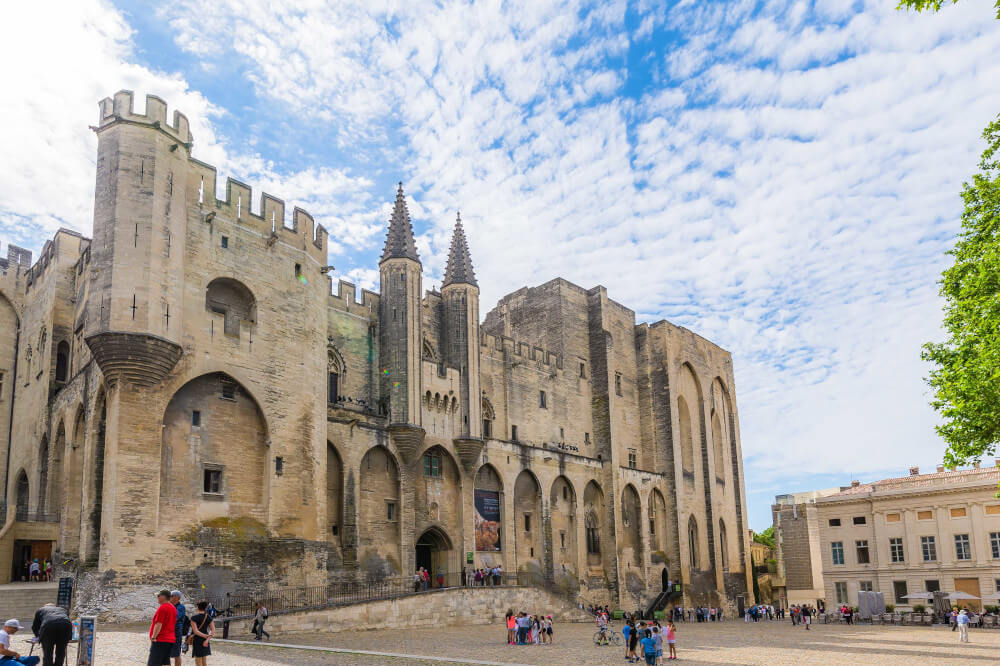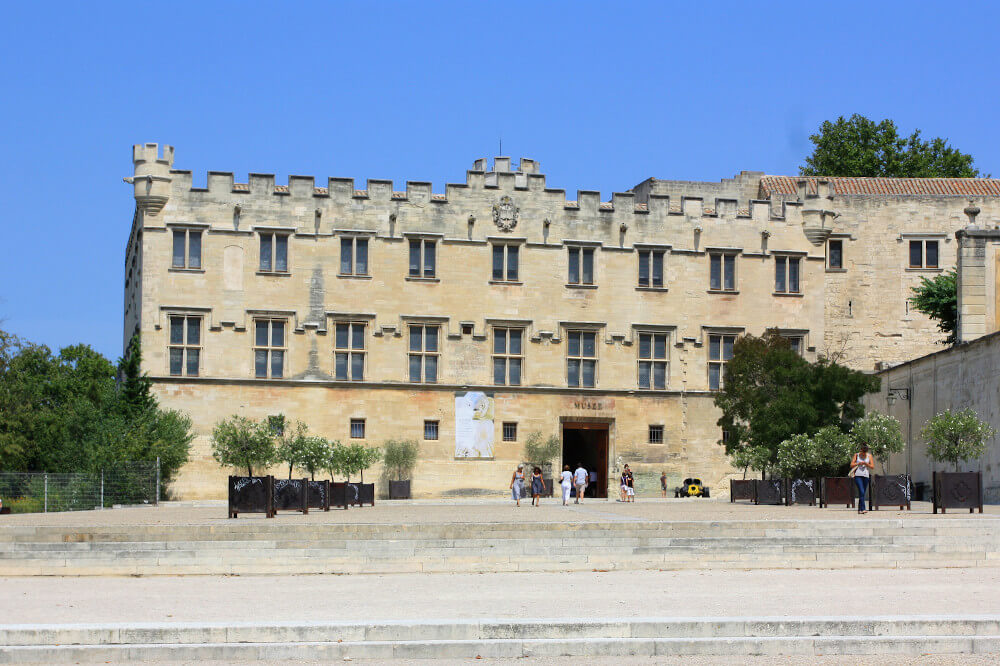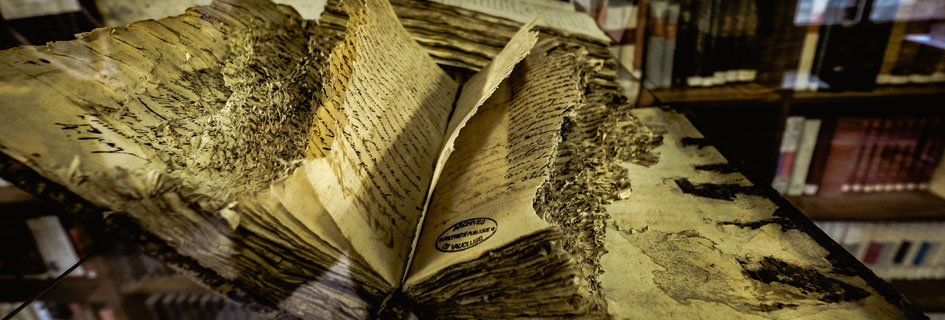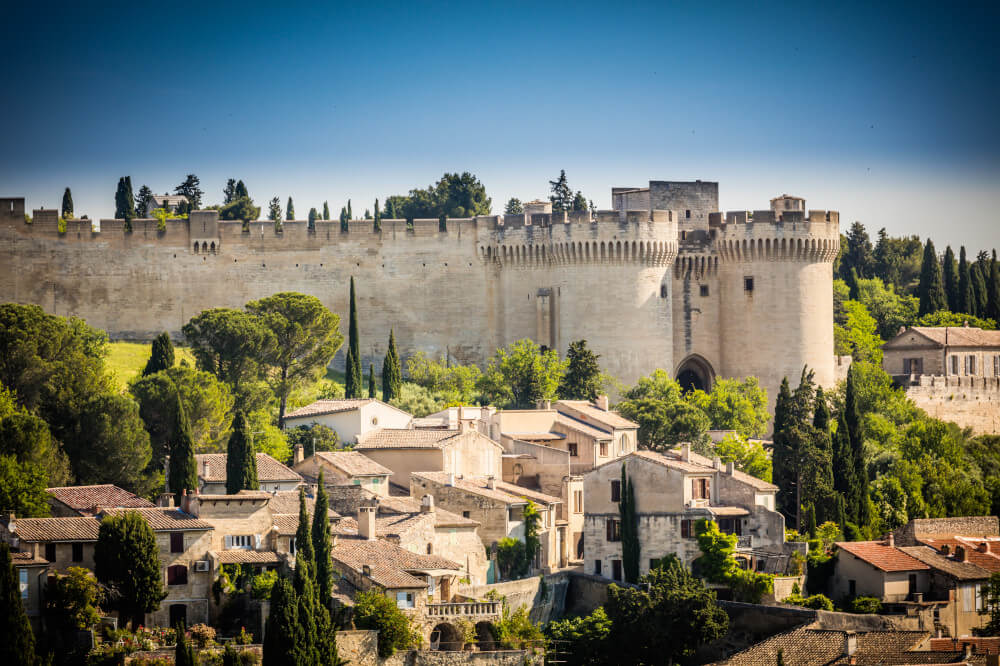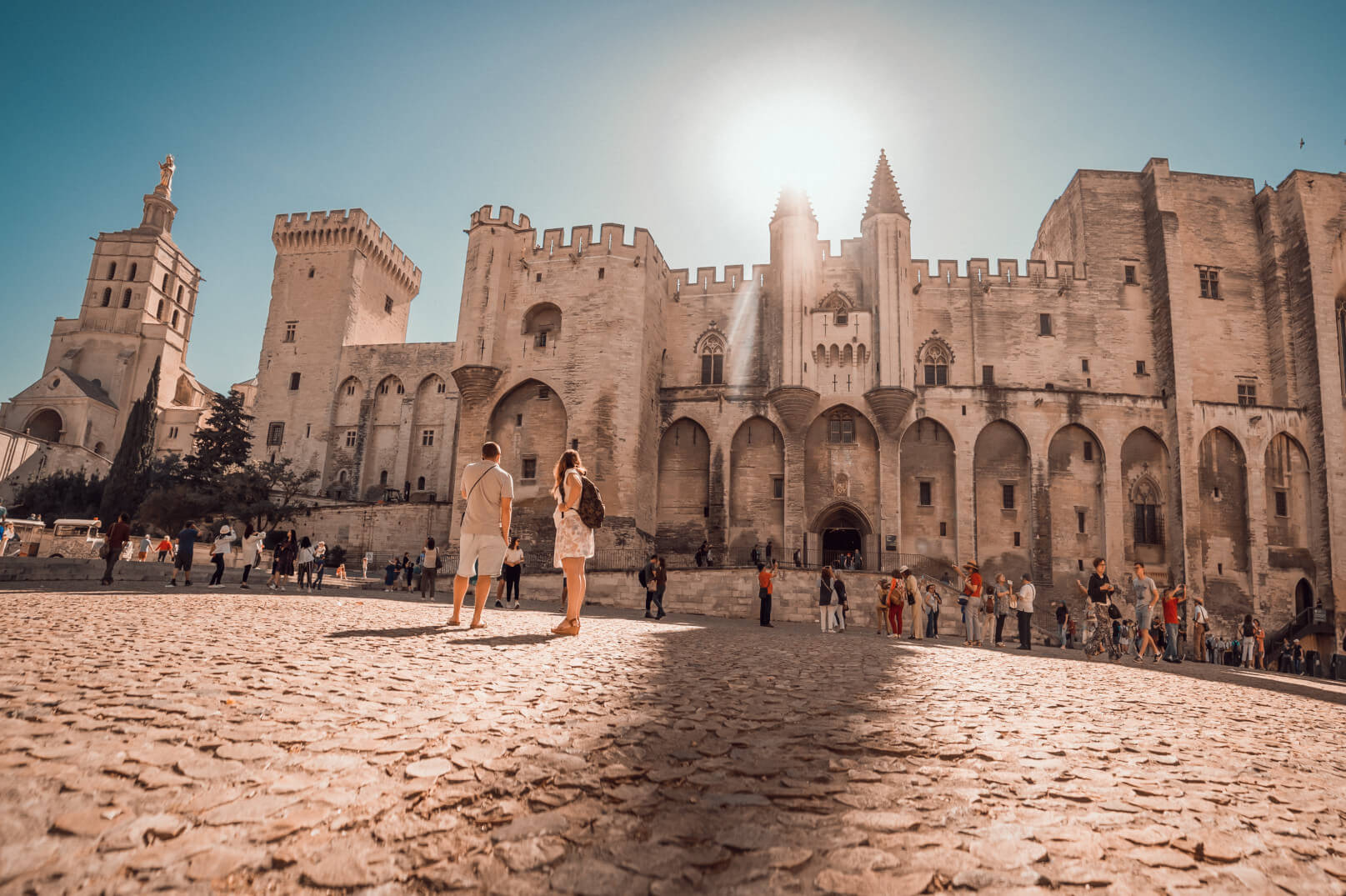
Avignon at the time of the popes

1 day
Distance :
4.3 Km
Popes’ Palace in Avignon
Villeneuve-lez-Avignon
The popes marked the city with their presence in the 14th century and their time here has had a lasting influence on daily life in Avignon.
With this itinerary, discover the key buildings that bear witness to the golden age of the City of the Popes.
Download
Click here to download in GPX formatStart
Palais des Papes
Place du Palais, 84000 Avignon
Coordinates
4.807676
43.951057
Step 1: The Popes’ Palace
A majestic monument with impressive architecture, first admire the Popes’ Palace from the outside and then let it reveal its secrets through augmented reality as you explore the interior.
Imagine the impact the pope had as he addressed the crowds from the balconies overlooking the Porte des Champeaux!
Before you go in, have a look at the different phases of construction and distinguish between the old and new palaces.
Continue by stepping foot inside the building where you can see what it was like at the time of the popes, thanks to a digital tablet which shows the different rooms alive with colour, furniture, and other artefacts that were there at the time.
A truly immersive historical experience!
Take note
- 9 popes reigned in Avignon from 1310 to 1409
- In the summer, the Palace’s Cour d’Honneur (main courtyard) is transformed into a stage for the Avignon Festival
Step 2: Le Petit Palais
The site chosen by Benedict XII to build his palace was already home to the bishops of Avignon. He solved the problem by moving the bishops to a cardinal’s palace nearby: Le Petit Palais.
This monument certainly testifies to the influence of the popes in Avignon over the centuries. Given that the Petit Palais became episcopal see under the wishes of Benedict XII, it subsequently housed the Archbishop and remained the property of the church until the Revolution.
Today, the Petit Palais is a museum holding onto its roots through the Campana Collection, which displays primitive Italian works depicting a number of religious scenes.
Take note
- Free entry
- The building’s current appearance is owed to the archbishop Julien de la Rovère who carried out works in 1481
Step 3: the Cardinal’s Palaces
With the arrival of the popes, all the members of the Papal Court settled in Avignon – in particular the cardinals who had to be accommodated in suitable residences: the “livrées” (palaces).
Provoking a real housing crisis, some cardinals bought several more properties to build palaces that resembled the Petit Palais. Based on the model of the Popes’ Palace, the cardinal’s palaces were built around 1 to 2 courtyards and accommodated large rooms allowing the organisation of extravagant receptions.
Today, a few of these palaces remain – these are the belfry of the old town hall which was originally the livrée d’Albano, the livrée de Viviers, and particularly the livrée Ceccano which is now Avignon’s municipal library, open to the public.
Take note
- The Ceccano multimedia library is open from Tuesday to Saturday
- In the 14th century, around thirty palaces were built in Avignon
Step 4: Philippe le Bel Tower
Let’s now head over to the other side of the Rhône to discover how the papacy transformed the territory, right up to the borders of the Kingdom of France…
The arrival of the papacy also generated big changes for Villeneuve-lez-Avignon, which is just opposite Avignon. Many cardinals crossed the Rhône to find a more suitable place to settle here, away from the tumult of the city.
Today you can admire La Chartreuse, a palace built by the future Pope Innocent VI for the Carthusian Order after his election.
The King of France, Philip the Fair (‘Philippe le Bel’) wanted to demonstrate his power to the pope, his neighbour, through building Fort St André (planned from 1292 and completed in 1361), which can easily be seen from the Papal City.
Did you know?
- King Philip the Fair requested that Pope Clement V suppress the order of the Knights Templar
- Entry to the monuments in Villeneuve lez Avignon is included in the Vaucluse Provence Pass
